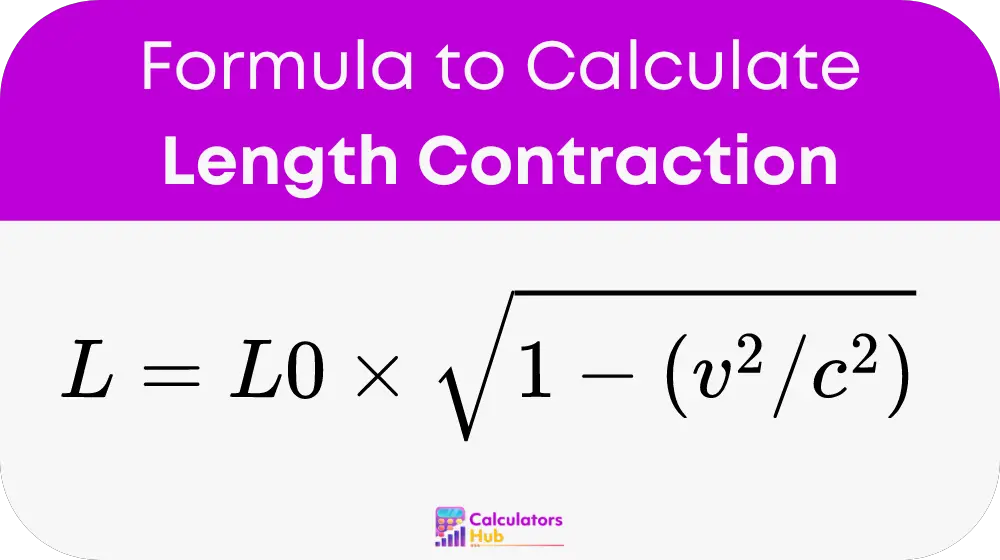The Length Contraction Calculator is vital for anyone studying or working with theories of special relativity. It calculates the apparent contraction in length of an object when it moves relative to an observer. This phenomenon is important for understanding particle movements at significant fractions of the speed of light and has applications in particle physics and aerospace engineering.
Formula of Length Contraction Calculator
The key formula used by the calculator is:

where:
- L is the length observed by a stationary observer.
- L0 is the proper length, or the length of the object in its rest frame.
- v is the velocity of the object relative to the observer.
- c is the speed of light in a vacuum, approximately 3 x 10^8 meters per second.
Useful Conversion Table
Here is a table with pre-calculated lengths for objects moving at different velocities:
| Velocity as a fraction of light speed (v/c) | Contracted Length (L/L0) |
|---|---|
| 0.1 | 0.995 |
| 0.5 | 0.866 |
| 0.9 | 0.436 |
| 0.99 | 0.141 |
This table allows for quick estimates of length contraction without performing calculations each time.
Example of Length Contraction Calculator
Consider a spacecraft that is 100 meters long in its rest frame, traveling at 90% the speed of light. Using our formula, the observed length would be:
L = 100 * sqrt(1 – (0.9^2)) = 43.6 meters
This example shows the significant contraction of length at high speeds.
Most Common FAQs
Length contraction is predicted by Einstein’s theory of special relativity and is crucial for understanding behaviors of objects at near-light speeds, especially in astrophysics and high-energy physics.
The calculator is based on the well-established equations of special relativity, making it highly accurate for both educational and professional uses.
Yes, it is an excellent tool for teaching complex concepts of relativity, helping students visualize and calculate real-world scenarios.